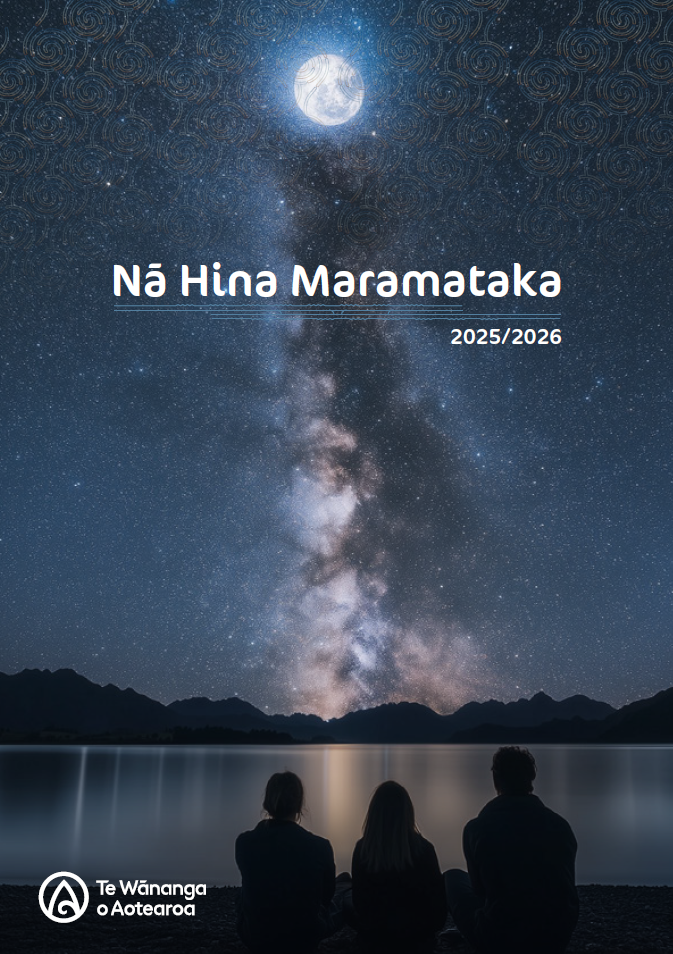Maramataka
Nā Hina - Maramataka
The maramataka is a calendar and almanac based on the movements of the moon and stars. Our tūpuna (ancestors) developed and adapted the maramataka over centuries of observation, recording and passing on knowledge of changes in te taiao (the natural environment) with each lunar phase. Different iwi and hapū may have their own versions of the maramataka.
Hina is the personification of the moon and is responsible for the darkness at night and the light in the day.
Nā Hina is not just a calendar, but a symbol of our cultural heritage and connection to the maramataka, the Māori lunar calendar. Created with artwork from Te Wānanga o Aotearoa and mātauranga (knowledge) from maramataka experts, including Professor Rangi Matamua, it embodies the wisdom and knowledge of our ancestors who used the moon and stars to guide their daily activities and rhythms of life.
Nā Hina reflects our commitment to preserving and promoting our cultural practices and serves as a reminder of the importance of maintaining a strong connection to our traditional ways of knowing and being.
Frequently Asked Questions
What makes a maramataka different?
Most calendars we use today are Gregorian calendars, characterised by a 365-day year to match the amount of time it takes for the earth to complete one revolution around the sun. A maramataka measures time by stellar months and lunar phases.
Gregorian calendar
- Based on the sun
- Aligns to a 24-hour day
- Different number of days each month
- Months are identified using names and events from ancient Rome
Maramataka
- Based on the moon and stars
- Does not align to a 24-hour day
- Same number of lunar phases each month
- Months are identified by the star(s) that rise with the new moon
How do I use this maramataka?
Cut out the lunar phase cards found in the back pages of this maramataka.
Observe the moon. Use the cards as a visual guide to help you determine its phase.
Make notes in the pages of your maramataka. You might choose to record the Gregorian date and time at which you observed the lunar phase. You may also record your observations of te taiao or your own energy levels.
Why doesn’t it have dates on it?
The lunar cycle doesn’t line up one-to-one with the 24-hour Gregorian day, so it’s a bit misleading to assign a date to each phase. We developed this version of the maramataka in consultation with Dr Rangi Matamua with a goal to represent the mātauranga as accurately as possible. The Gregorian date for Whiro (the new moon) and Rākaunui (the full moon) are provided for each month as a bit of a reference for you to determine when the other lunar phases fall in the Gregorian calendar.
How do I figure out what moon phase it is?
We encourage you to go outside, observe the sky (during the day as well as at night), and note your own observations for the other lunar phases. By recording these observations, you can create your own personal maramataka. You might also consult your hapū, iwi, kaumatua, or other online resources that can support your learning.
Many thanks also to our internal contributors for sharing their mātauranga.
